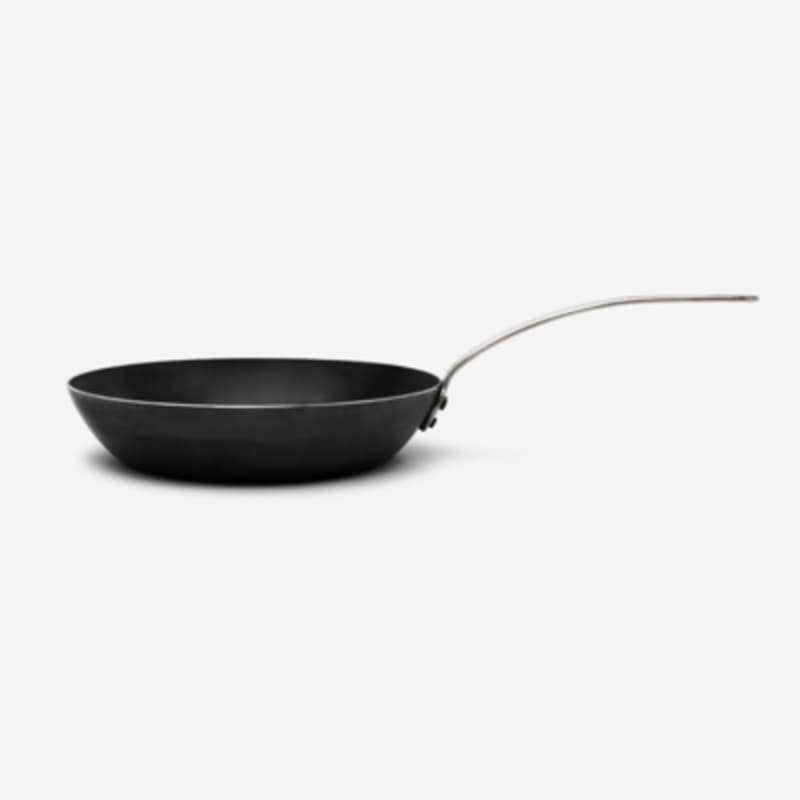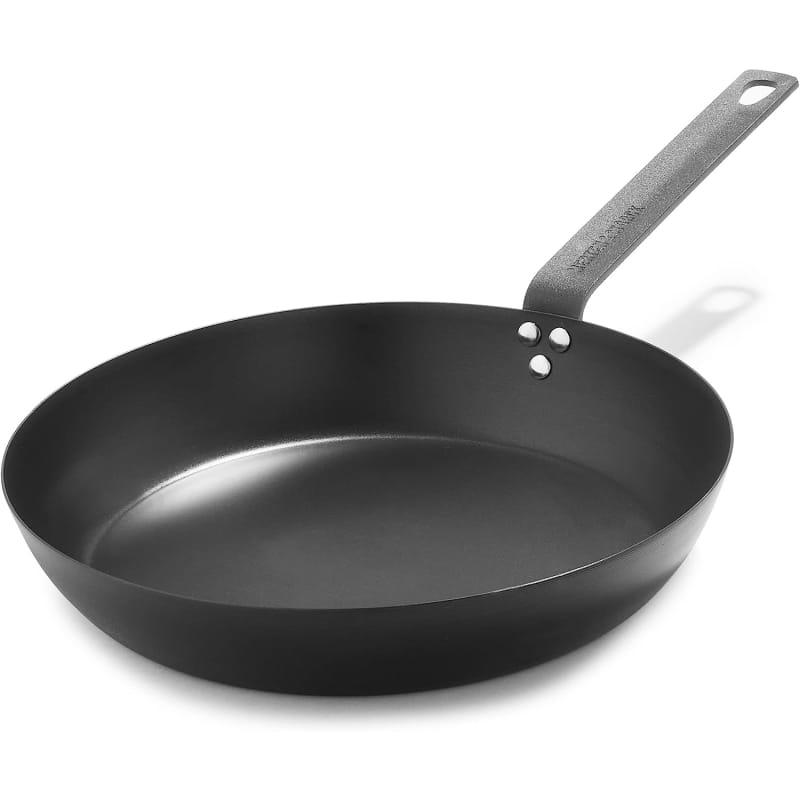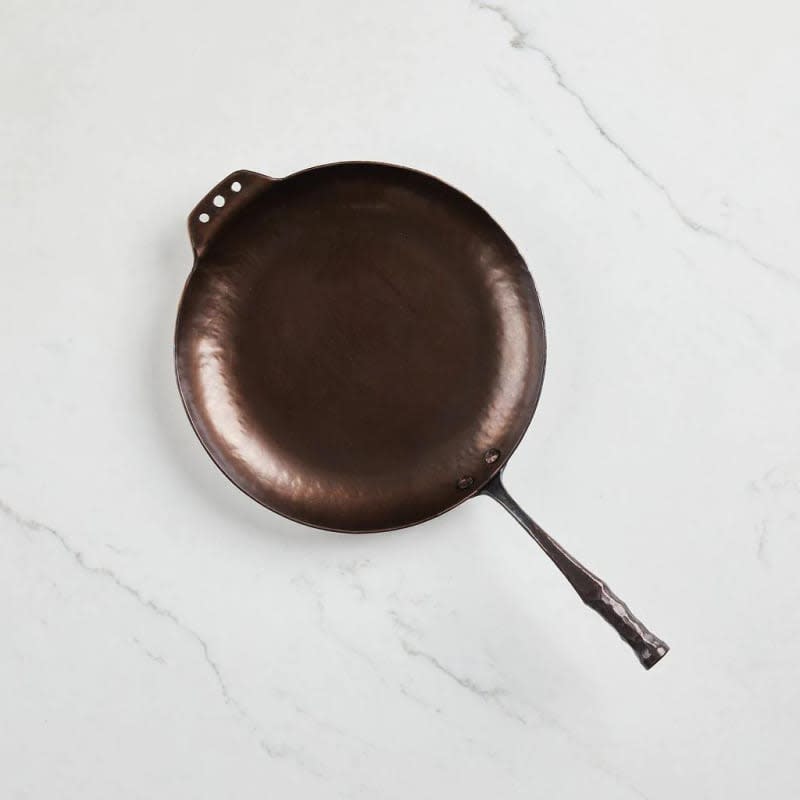We Tested a Dozen Carbon Steel Skillets — This Is the Absolute Best One You Can Buy Right Now
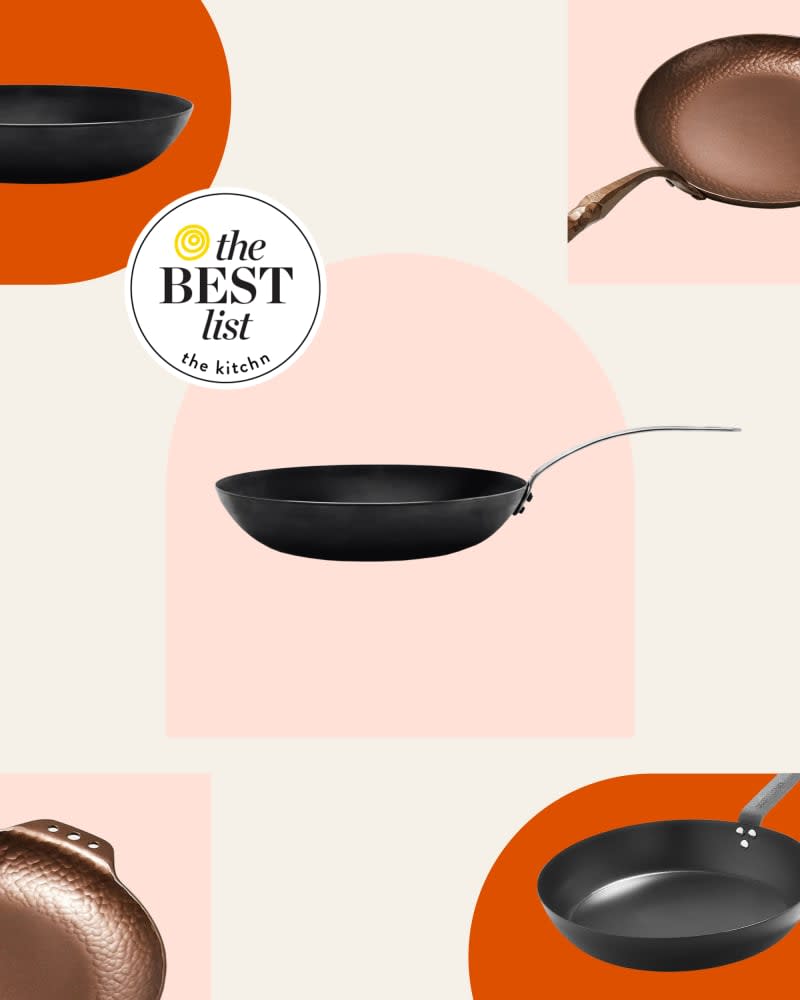
Table of Contents
I thought I left carbon steel behind when I closed the professional-line-cook chapter of my life and entered the baby-making and school-lunch-packing era. Back in the day, while cooking in restaurants, I never thought twice about juggling multiple carbon steel skillets on a hot line. At home, however, things move at a different pace and as a result, I’ve stocked up on easy-breezy nonstick cookware.
But, wait! What’s this now? Home cooks are jumping on the carbon steel skillet train? With the stuff growing in popularity, we all here at The Kitchn figured it was time to revisit this old friend and share the best of the best with you all.
What We Look for in Carbon Steel Skillets
When it comes to carbon steel skillets, there are three areas we considered when deciding what makes a great pick:
Performance: How well did the chicken thighs brown? Did eggs stick to the skillet? Were the pancakes an even shade of golden-brown, regardless of their placement in the skillet?
Ease of Use: Was the skillet comfortable to hold and handle? How easy was it to flip the pancakes within the skillet? Was there a lot of splatter while cooking?
Cleanup: Did any food get stuck onto the skillet that couldn’t be easily cleaned off with a soft sponge and warm water? Did any rust patches form on the skillet?
Below, we rounded up some of the best carbon steel skillets on the market today that hit all of these criteria and then some, including some long-standing favorites of the team here at The Kitchn, as well as reader favorites you all can’t get enough of.
Do you have a carbon steel skillet you swear by that didn’t make this list? We want to hear all about it. Tell us about your favorite finds in the comments below!
Blue Carbon Steel Seasoned Frying Pan, 10" Blue Carbon Steel Seasoned Frying Pan, 10"
Scoring consistently high in each test we ran it through, Made In Blue Carbon Steel Frying Pan proved itself to be the best performer (nonstick, lightweight, consistent heat distribution, etc.). It cleaned up oh-so nicely and came pre-seasoned, so you don’t have to deal with any of that uncertainty around building the initial patina. We've also tested and reviewed it at least three times on The Kitchn (here, here, and here) and it's well-reviewed on other sites as well, so you can trust that this pick comes highly recommended. And we know it’s not about the looks, but this pan is as sleek as they come.
Who it’s best for: Anyone looking to stock their home kitchen with carbon steel (especially those who want to skip the initial seasoning process!)
Good to know: This pan comes in two sizes: 10-inch and 12-inch.Merten & Storck Carbon Steel Black Frying Pan, 12" Merten & Storck Carbon Steel Black Frying Pan, 12"
This was the lightest of the skillets we tested, making it super easy to maneuver while cooking with one hand. It also boasted one of the largest flat cooking diameters (which means you can fit more eggs or pancakes in each batch). It performed really well, just losing a fraction of a point for slight unevenness in browning. It was totally nonstick right out of the box and quick to heat up — pretty much everything we want in a carbon steel skillet. All in all, it’s a very affordable option, and an especially good choice for those just starting their carbon steel journey.
Who it’s best for: Carbon steel novices looking for a light and easy-to-handle skillet.
Good to know: Like most carbon steel skillets, this product is shipped with a protective wax coating the pan; be sure to wash the wax off with soap and warm water before using.Smithey Carbon Steel Farmhouse Skillet, 12" Smithey Carbon Steel Farmhouse Skillet, 12"
Rather than being cast in a mold, this Smithey skillet is hammered into form by a blacksmith. You can really see the hand-forged details throughout the skillet and handle. Throughout testing, it was remarkably easy (and fun!) to use, and it was pretty effortless to clean. It lost a bit of a point in performance because it browned the chicken TOO well and fast — but that’s something you learn to calibrate the more you get to know your pan. It's also worth noting that while expensive, it's definitely an "heirloom” piece you can look forward to passing down to future generations.
Who it’s best for: The home cook who wants not just a skillet, but a piece of art.
Good to know: Smithey produces a limited number of these “farmhouse” skillets in partnership with Charleston blacksmith Robert Thomas Iron Design. Grab one if you can!
FAQ: Everything You Need to Know About Carbon Steel Skillets
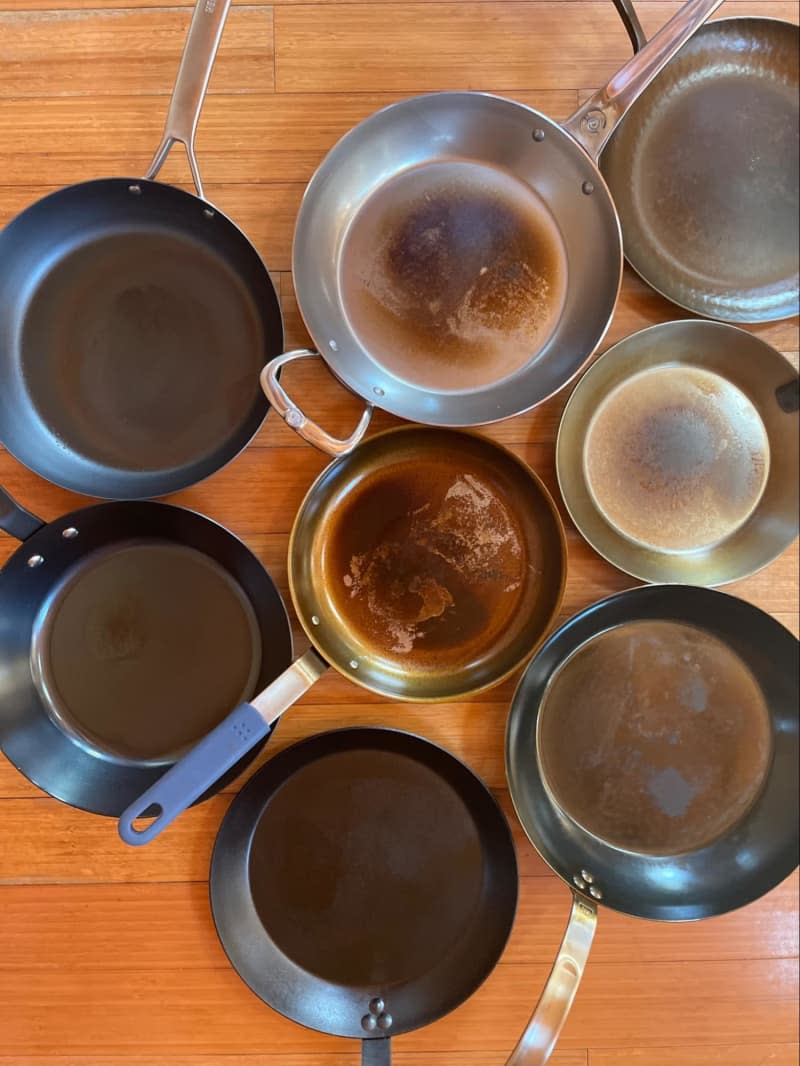
Why should you use a carbon steel skillet?
Here’s the quick sell: Carbon steel heats up super fast, it’s lighter than cast iron, and it’s wildly durable. While you do have to season it, like cast iron, it will develop a natural nonstick patina over time that will last much longer than pans with synthetic nonstick coatings. In fact, it will last forever if treated right. It can also be used on pretty much any heat source (electric, gas, induction, oven, grill, or even in a campfire!) and with any utensils (read: you don’t have to worry about metal tools scratching the pan).
Carbon Steel vs Cast Iron
The carbon in carbon steel cookware is what separates it from good ol’ cast iron. This carbon makes the metal smoother and easier to form into thinner, lighter-weight pans. While you may love your trusty cast iron skillet for its many virtues, it’s not an easy one-hand-operated vessel for sautéing or flipping. Carbon steel skillets, on the other hand, can be easier to maneuver. Their slimmer profiles also allow them to heat up faster than thick cast iron.
How to Season a Carbon Steel Skillet
If you’ve never seasoned a pan before, let’s break it down: Seasoning is the process of applying oil (or seasoning wax) to a pan to bake into the pores of the material with which it’s made, in this case carbon steel. Thin layers of heated oil polymerize to develop an easy-release cooking surface. The seasoning process also prevents rust from forming. In other words, you can’t skip the seasoning step with these pans; if you do, your food will stick to a rusty pan. To properly prep your skillet, check our complete step-by-step guide on how to season a carbon steel skillet.
Some of these skillets require a pretty hefty amount of time and attention upfront. The initial seasoning process can range from zero minutes (hooray for pre-seasoned carbon steel!) to hours. You need to have a properly seasoned skillet for it to cook well, so don’t commit to a pan until you have thoroughly investigated what work you’ll need to put into it before you can start using it. Luckily, these days a lot of carbon steel (and cast iron, for that matter) come pre-seasoned and that’s my Very Strong Preference. They are just so easy and foolproof; they are ready to go out of the box. If you are a novice with carbon steel, or don’t feel super confident seasoning skillets, you might want to consider one that’s already been seasoned by the manufacturer.
Note: Most of these products ship with a protective coating that must be washed off (just with soap and water) before you start cooking.
How to Use a Carbon Steel Skillet
The cooking experience is a bit different with carbon steel skillets. Browning is much more intense and happens quickly. We found this out the hard way during testing while searing chicken thighs. We usually brown chicken in a nonstick pan for about seven minutes, skin-side down, but in that amount of time in a carbon steel skillet, the thighs scorched. Lesson learned: Lower the heat and browning time in these skillets.
You also need to watch out for acidic ingredients (like tomatoes, lemon, and wine) when you’re first developing your seasoning on the skillet, because acids can dissolve the natural nonstick layer, causing rust to form.
How to Clean a Carbon Steel Skillet
You may need to adjust your cleaning ritual if you switch to carbon steel cookware. You cannot place these skillets in the dishwasher, leave them to soak, or air dry them because they absolutely can (and will) rust (You can fix any rust spots by re-seasoning the pan, so don’t worry too much!) Thankfully, if you are already accustomed to using cast iron, it’s pretty much the same deal when it comes to keeping carbon steel clean: Wash the skillet by hand, dry it thoroughly, and reheat it with a tiny amount of oil rubbed onto the cooking surface.
For an in-depth how-to, check our complete guide on how to clean a carbon steel skillet.
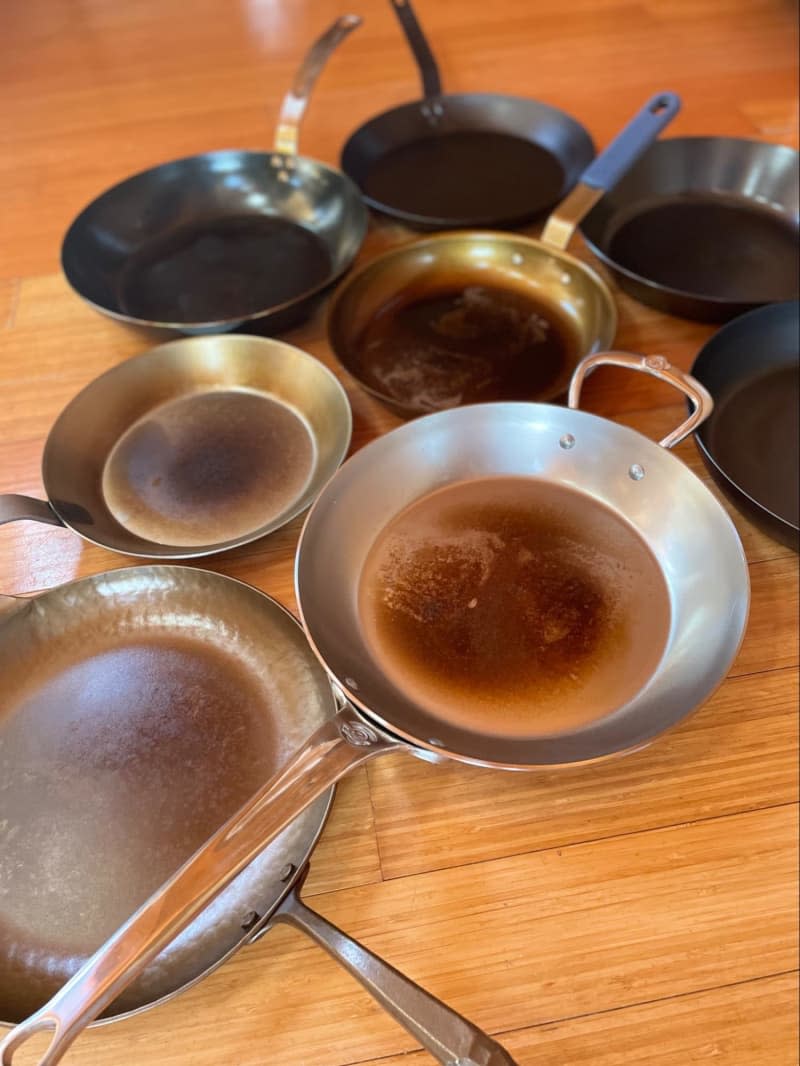
Why do carbon steel skillets change color?
Try not to get too frustrated with the ever-changing appearance of the cooking surface or your carbon steel pan. With more and more use, the cooking surface turns darker and darker as it develops a sleek black patina that makes cooking with these pans easier. Some of the changes are downright alarming, and you almost certainly will think you screwed something up. The surface may look spotty, uneven, or almost like a rainbow, but, believe it or not, this is all normal. Just stick with it and keep using (and caring for — i.e. seasoning) your skillet.
What to Consider When Buying a Carbon Steel Skillet
The Handle
Unlike heavier vessels that are just meant to stay put, you should be able to move your carbon steel skillet around with confidence and some level of ease. So the details of the handle are key.
Design: The handle designs we encountered in this lineup of products fell into two categories: bent and rounded. The bent style features a sharp angular direction change as the handle comes up and away from the pan. The rounded style resembles an arch shape. While we didn’t find either design inherently superior, most of our favorite skillets had bent handles.
Length: The skillets we tested had handles that ranged in length from 7.5 to 10 inches (measured from the exterior of the skillet to the far tip of the handle). We were surprised to find that our very favorite skillet actually had the shortest handle; while we thought it would become hot and hard to handle, it was, in fact, stable and comfortable!
Material: While the majority of the skillets’ handles were made of carbon steel, a few incorporated different materials like stainless steel, aluminum, and silicone-wrapped carbon steel.
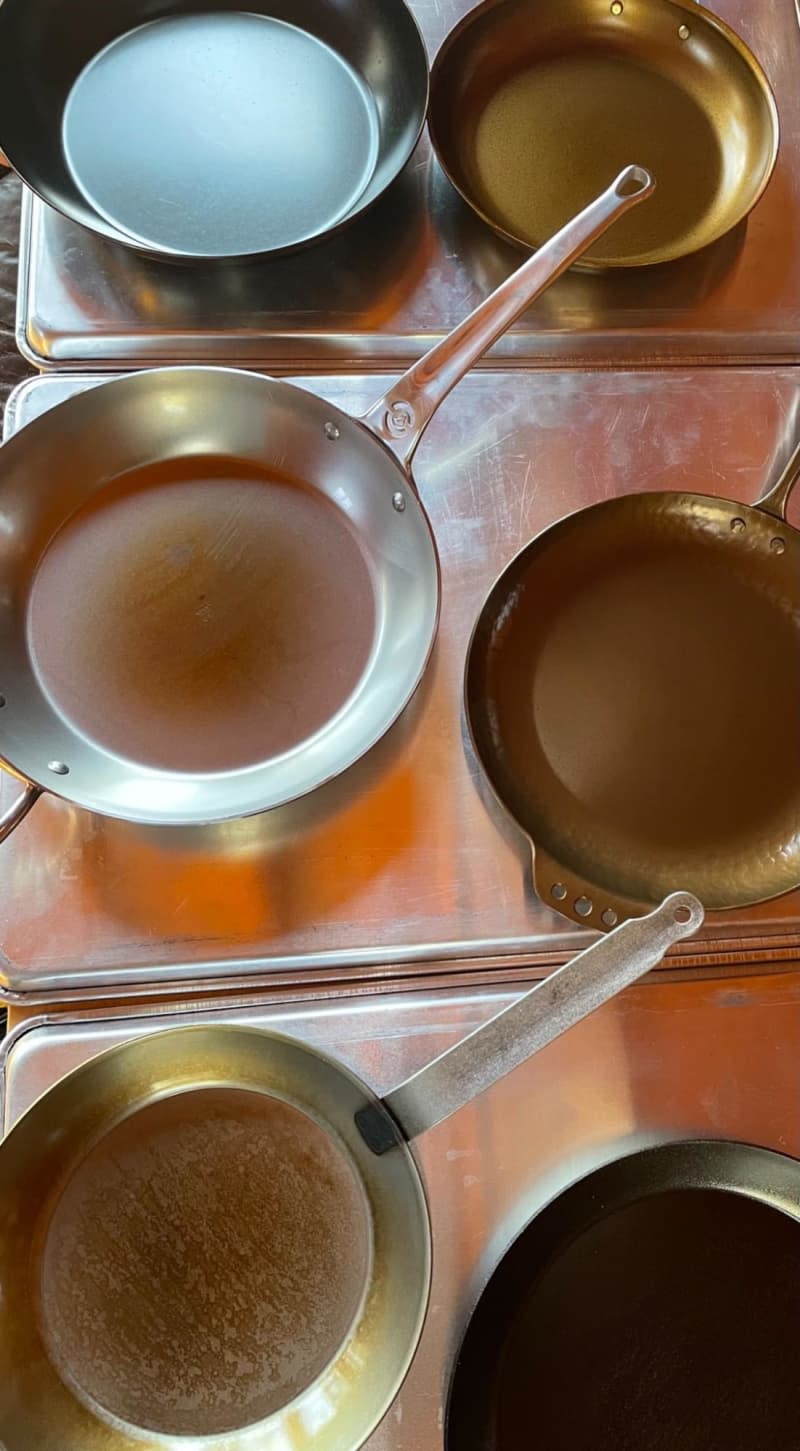
Weight
Because the main benefit of a carbon steel skillet over cast iron is its relative light weight, you should investigate the poundage before purchasing a pan. We were shocked to find one of the skillets in our testing lineup to be just shy of 7 pounds (6 pounds 14.6 ounces, to be exact). It was a two-hander, for sure, and really just too heavy. The skillets we liked best were between 3 and 5 pounds.
How We Shop for You
Our writers and editors put hundreds of products to the test every year to determine which ones get our stamp of approval and are really worth your time and money. If we love it, you’ll hear about it.
Why You Should Trust Us
Our team is made up of writers and editors with years of experience in the home, kitchen, and parenting consumer product space, and who are always testing for new tried-and-true staples.
How We Test Products
We put products to the test right where they matter: at home. We bring these products into our personal spaces and test them for weeks and even months to see if they live up to their claims. At the end of the day, we’re consumers too, so we’ll provide you with all the information we’d want — and then some.
